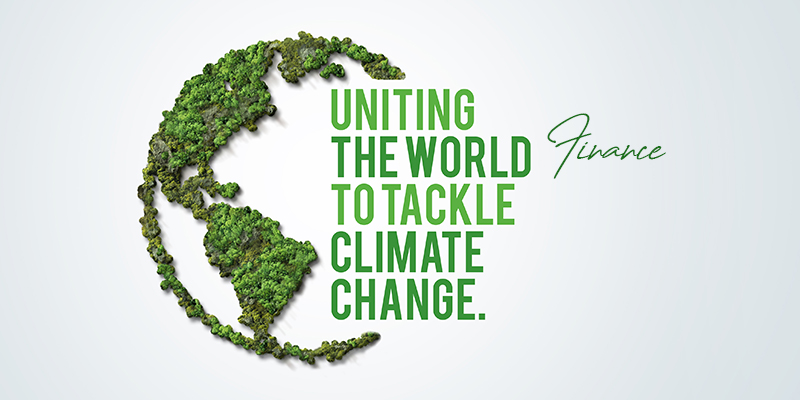Climate financing, in essence, comprises the spectrum of financial support received from public, private, and alternative channels at the local, national, and global levels. Its principal goal is to strengthen efforts to mitigate and adapt to the difficulties posed by climate change. International treaties such as the Convention, the Kyoto Protocol, and the Paris Agreement emphasize the necessity of financial assistance, asking wealthy nations to assist those that are less privileged and vulnerable. This acknowledges the inequalities in climate change contributions as well as the differing capacities to battle and tolerate its consequences.
There is a dual role of climate finance. On the one hand, it is critical for mitigation, requiring major investments to drastically reduce emissions, particularly in industries responsible for significant greenhouse gas emissions. On the other side, it is equally important for adaptation, necessitating significant financial resources to assist society and economy in coping with the negative effects and mitigating the effects of a changing climate.

Sharing burden of Climate Change
Consider this: rich countries, such as Switzerland, standing up to provide the financial support needed to make the globe a better, greener place. It’s not only about the money; it’s also about taking responsibility. Developed countries must play a critical role in aiding developing countries in meeting their climate targets. This financial assistance aids in the development of resilience and the reduction of emissions in areas that require it the most.
The $100 Billion Target: A Joint Commitment
High-income countries stepped on the world stage in 2009, making a historic commitment to channel $100 billion per year into climate financing, on top of prior assistance pledges. A commitment made to safeguard vulnerable countries from the harsh effects of climate change. Fast forward to the present, and that once-promising commitment has largely gone unfulfilled. It’s a thorny issue in international climate negotiations, spreading scepticism and hindering progress. Despite the hurdles, climate finance talks have centred on the $100 billion objective, reflecting a shared commitment to assisting the most vulnerable people to climate change.
Established in the Copenhagen Accord in 2009, this target expanded in the Cancun Agreements in 2010 and reaffirmed in the Paris Agreement, underlines developed countries’ determination to fulfil this vital milestone. It demonstrates a collective commitment to assisting developing countries by making genuine mitigation efforts and being transparent in their implementation. While the goal was not met by 2020, developed countries defined a Delivery Plan at COP26, demonstrating their steadfast commitment to keeping this promise.
The 2009 pledge was made to protect vulnerable nations from the harsh effects of climate change. Fast forward to the present, and that once-grand promise remains largely unfulfilled. It’s a sore spot in international climate talks, sowing doubt and impeding progress.
What Next After $100 Billion? The NCQG (New Collective Quantified Goal)
As we near the $100 billion mark this year, the world’s attention turns to what comes next—the New Collective Quantified Goal (NCQG), planned for 2025. What’s the big deal? It is estimated to reach trillions of dollars, representing a massive step forward in the worldwide fight against climate change.
Climate Finance Misdirection
A recent investigation from the multinational NGO CARE revealed a shocking revelation. It reveals an astonishing fact: from 2011 to 2020, 93% of climate finance reported by high-income countries came directly from development aid budgets. What exactly is the big deal? It’s a savvy financial ploy, but it’s having an effect. Climate action funds are being diverted from critical areas such as healthcare, education, gender equality, and poverty alleviation.
A Dysfunctional Dilemma in Climate Finance
“The majority of climate finance is development finance disguised,” says John Nordbo, Senior Climate Adviser at CARE Denmark. It’s like dressing up a donation as a present, but it’s a dysfunctional, deceptive, and ultimately unjust costume. This was not the 2009 agreement, in which climate financing was supposed to be a shining light of increased support.
Adaptation vs. Mitigation
The disparity in funding for climate adaptation and mitigation is especially problematic. While both are critical to addressing the climate catastrophe, adaptation money lags far behind. Despite a donor commitment to double adaptation financing made at the United Nations climate summit, climate adaptation initiatives struggle to get the necessary finances. In Kenya, for example, 80% of climate financing is allocated to mitigation, leaving critical adaptation initiatives unfunded.
As the climate financing crisis grows, the need to close the gap between promises and deeds becomes clearer. High-income countries must meet their climate financing pledges while fulfilling their obligations to assist needy states. There is a lot more to learn about what policymakers and professionals have to say on current climate finance policies and how they look towards its progress. The future of climate finance will present enormous challenges. Still, it will also provide an opportunity to reshape the global financial environment and demonstrate a genuine commitment to addressing climate change and its broad consequences.



